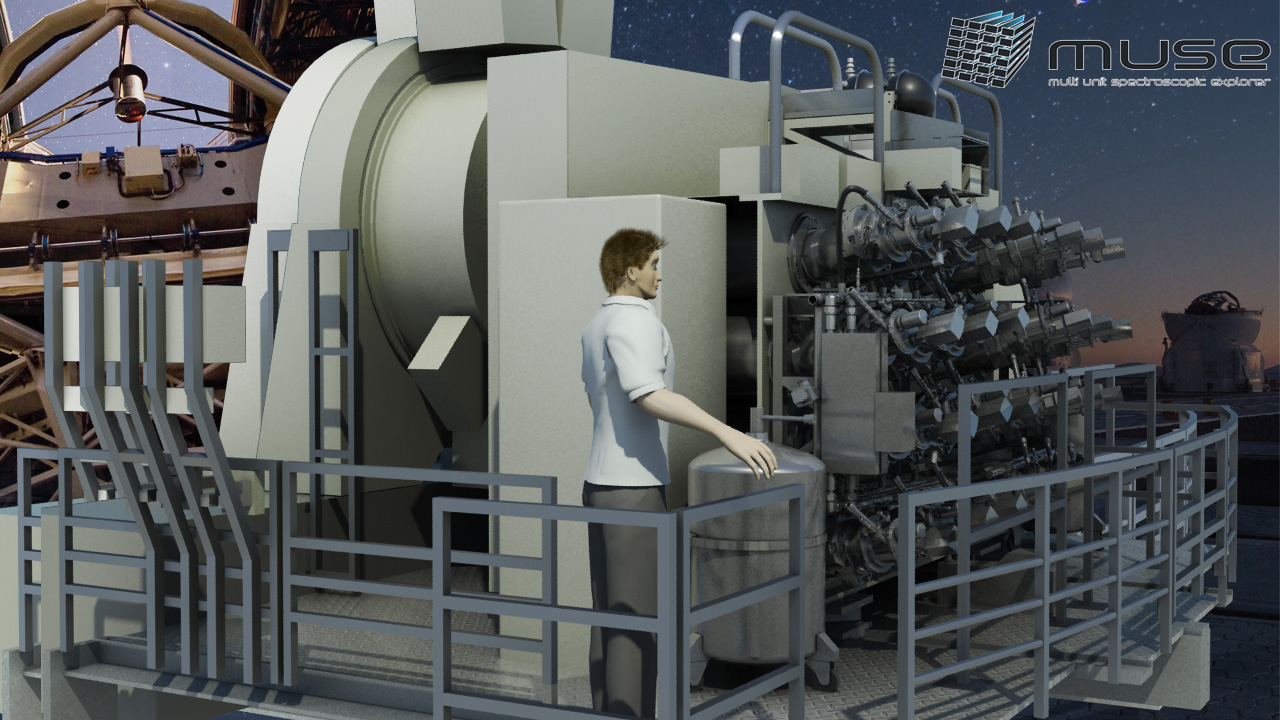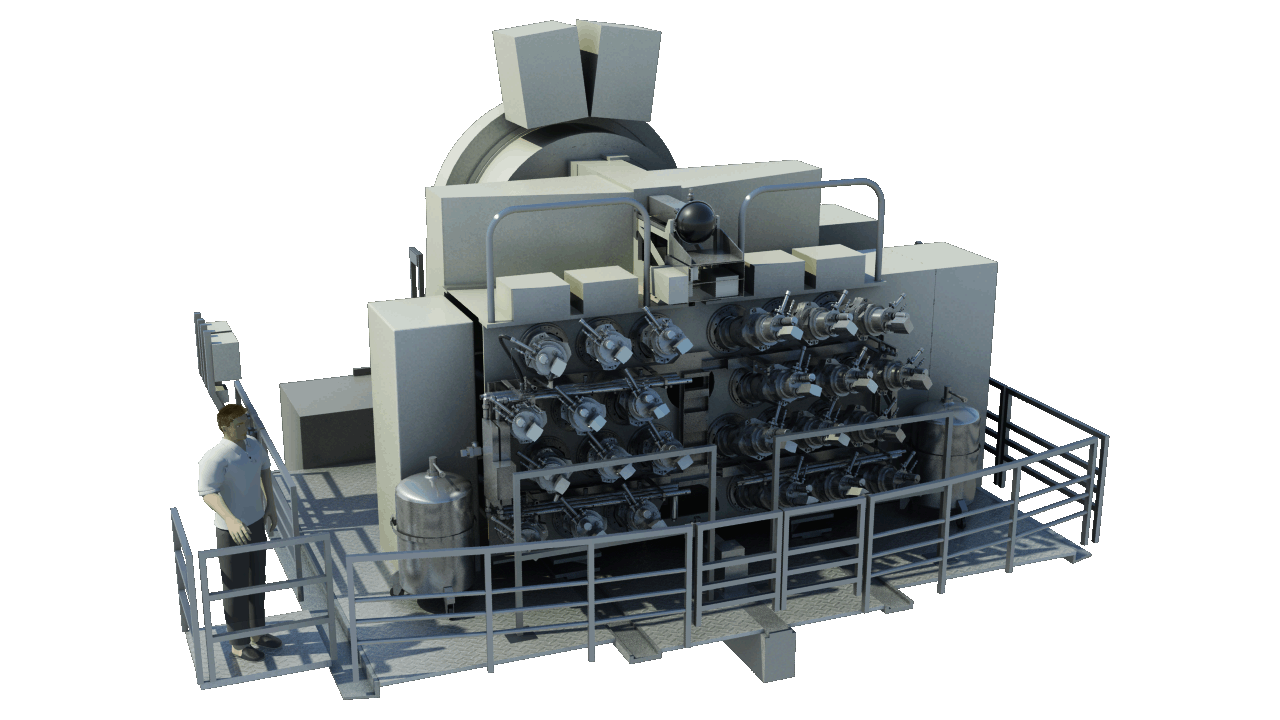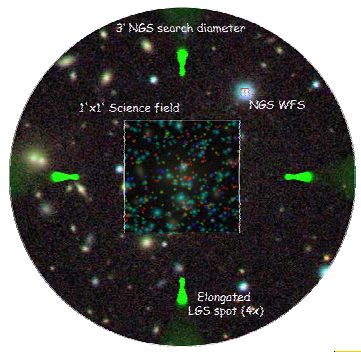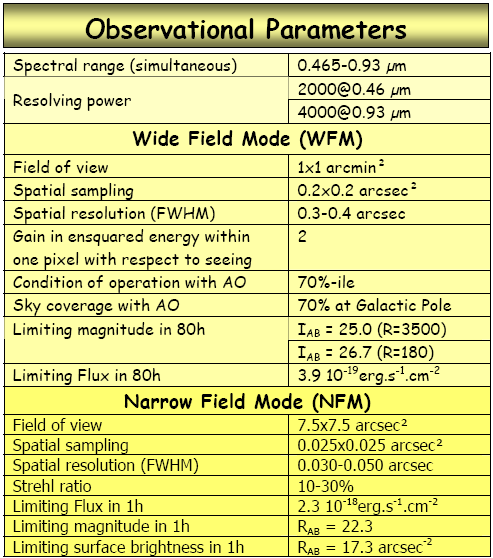A Multi Unit Spectroscopic Explorer - MUSE
(Note, this was the development web page for MUSE. Since it entered operations the official source of information at ESO for MUSE is here.)
Overview
| The Multi Unit Spectroscopic Explorer (MUSE) is a second generation instrument in development for the Very Large Telescope (VLT) of the European Southern Observatory (ESO). It is a panoramic integral-field spectrograph operating in the visible wavelength range. It combines a wide field of view with the improved spatial resolution provided by adaptive optics and covers a large simultaneous spectral range. MUSE couples the discovery potential of an imaging device to the measuring capabilities of a spectrograph, while taking advantage of the increased spatial resolution provided by adaptive optics. This makes it a unique and powerful tool for discovering objects that cannot be found in imaging surveys. |
Instrument status
| Built under ESO contract by | MUSE Consortium , consisting of AIP Potsdam, CRAL Lyon, ESO, ETH Zürich, IRAP Toulouse, Leiden, IAG Göttingen |
| Principal Investigator | R. Bacon (Lyon) |
| ESO responsible/instrument scientist/project manager | A. Glindemann, J. Vernet, A. Manescau (Garching) |
| Project status | Operations |
| Project milestones | Project kick-off: 2005-01-18 |
| Instrument Science Team | H. Kuntschner (ESO/INS, chair), A. Bunker (Univ. Exeter), A. Marconi (Arcetri), M. Pettini (Cambridge), E. Tolstoy (Kapteyn Astronomical Institute) |
| ESO MUSE Team | Matteo Accardo, Ralf Conzelmann, Claudio Cumani, Sebastian Deiries, Bernard Delabre, Michel Duchateau, Christophe Dupuy, Andreas Glindemann, Domingo Gojak, Jens Knudstrup, Paolo La Penna, Jean-Louis Lizon, Antonio Manescau, Ralf Palsa, Luca Pasquini, Dan Popovic, Marco Quattri, Roland Reiss, Gero Rupprecht, Josef Strasser, Stefan Ströbele, and Joël Vernet |
| Location | Nasmyth focus of UT4 |
Instrument Concept
The concept of MUSE foresees the splitting of the adaptive optics corrected field of view in 24 sub-fields. Each of these sub-fields is fed into a spectrograph (called Integral Field Unit, IFU). An image slicer in front of each IFU serves as entrance slit, thus producing a spatially resolved spectrum of the full sub-field.
MUSE will feature a Wide Field Mode (WFM) with a field of view (fov) covering 1x1 arcmin and a Narrow Field Mode (NFM) with a fov of 7.5x7.5 arcsec (see below).
A "fore-optics tower" between the telescope focus and the IFUs hosts a field de-rotator, an ADC, the shutter and the field splitting optics.
A calibration unit close to the telescope focus caters for all calibration needs.
MUSE will use adaptive optics. This image gives an idea of the MUSE field of view in the WFM including one natural guide star (NGS) and the four elongated artifical laser guide stars (LGS), here shown in green (click to enlarge).
The MUSE adaptive optics system is known as "GALACSI". It is being designed by ESO as part of the Adaptive Optics Facility (AOF).
This is an overview of the planned observational parameters of MUSE (click to enlarge).
The Narrow Field Mode will provide an exquisite spatial resolution (up to 10-30% Strehl ratio in the I-z band) in a smaller field of view. This mode will enable a wide range of scientific applications similar to the HST STIS type science but with an improved spatial resolution and a 2D spatial coverage.
Science objectives
MUSE will be optimised for the study of:
- Formation of galaxies
- high redshift Lyman alpha emitters
- flouorescent emission and the cosmic web
- reionisation
- feedback processes and galaxy formation
- ultra-deep surveys using strong gravitational lensing
- resolved spectroscopy at intermediate redshifts
- Sunyaev-Zeldovich effect
- late forming population III objects
- Nearby galaxies
- supermassive black holes in nearby galaxies
- kinematics and stellar populations
- interacting galaxies
- star formation in nearby galaxies
- Stars and resolved stellar populations
- early stages of stellar evolution
- masive spectroscopy of stellar fields:
- the Milky Way and the Magellanic Clouds
- the Local Group and beyond
- Solar system
- Galilean satellites, Titan
- surface heterogeneities of the small bodies
- temporal changes in the gas giant planets
- Serendipity
These science objectives were elaborated by the MUSE Consortium during the Phase A study.
Publications
Links
MUSE Consortium web sites: Lyon (main site), Leiden, Potsdam, Zürich
ESO: GALACSI AO
Instrument development, technical description
Science
A good overview is given by the MUSE Consortium.





